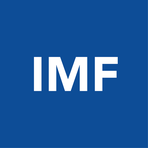Trade Winds Shift: A Glimpse into US-China Relations
April 24, 2025, 9:32 am

Location: United States, District of Columbia, Washington
Employees: 10001+
Founded date: 1944
Total raised: $530M

Location: United States, District of Columbia, Washington
Employees: 1001-5000
Founded date: 1944
Total raised: $33.23M
The trade relationship between the United States and China is like a high-stakes chess game. Each move is calculated, and the stakes are monumental. Recently, the air has shifted. The US Treasury Secretary, Scott Bessent, and President Donald Trump have hinted at a thaw in the icy tariffs that have gripped both nations. This is not just a flicker of hope; it’s a potential turning point.
The trade standoff has become a familiar narrative. It’s a saga of tit-for-tat tariffs, where each country has retaliated against the other with escalating duties. The US has imposed tariffs as high as 145% on various Chinese imports, a response to perceived unfair practices and concerns over issues like the fentanyl supply chain. In retaliation, China has countered with its own hefty tariffs, reaching 125% on US goods. This back-and-forth has created a landscape that resembles a battlefield more than a marketplace.
Bessent’s recent comments at a closed-door event have sparked optimism. He described the current tariffs as a “reciprocal trade embargo,” a phrase that encapsulates the gravity of the situation. Yet, he also expressed a belief that de-escalation is on the horizon. This sentiment is crucial. It suggests that both sides recognize the unsustainability of their current path. The markets reacted positively, with Wall Street indexes rising sharply following the news. Investors are like sailors, always seeking calmer waters, and this news offers a glimmer of hope.
Trump’s remarks further fuel this optimism. He stated he has no intention of firing Federal Reserve Chair Jerome Powell, a move that could have sent shockwaves through the financial world. Instead, he signaled a willingness to lower tariffs on China. This is significant. It shows a shift in strategy, a potential pivot towards negotiation rather than confrontation. The president’s previous criticisms of Powell had raised concerns about instability. Now, with a more measured approach, he appears to be setting the stage for a more constructive dialogue.
The backdrop of these developments is the International Monetary Fund and World Bank’s Spring Meetings. Here, global finance ministers and central bankers gather, eyes fixed on the evolving trade talks. The world watches closely, as the outcomes of these discussions could ripple through economies worldwide. The stakes are high, and the pressure is palpable.
China’s response has been cautious yet assertive. The country’s envoy has urged an end to the trade war but has also warned that Beijing is prepared to fight if necessary. This duality reflects the complexity of the relationship. China is not backing down, but it is also aware of the need for stability. The Chinese economy is intertwined with the global market, and a prolonged trade war could have dire consequences for both sides.
The idea of a “big deal” looms large in discussions. Bessent emphasized the need for fair trade and a rebalancing of China’s economy. This is a call for equity, a plea for a relationship that benefits both nations rather than one that feels like a zero-sum game. The concept of decoupling, or severing economic ties, is not on the table. Instead, there is a desire to find common ground, to build a bridge rather than a wall.
As the dialogue continues, the question remains: will both sides find a way to navigate these turbulent waters? The trade relationship is a delicate dance, and both nations must be willing to take steps toward each other. The potential for a trade deal is there, but it requires trust and compromise. The ball is in motion, but it is far from a done deal.
In the broader context, the implications of these negotiations extend beyond just the US and China. Other nations are watching closely, particularly those in the ASEAN region. They have a vested interest in the outcome, as the global economy is intricately linked. A resolution could stabilize markets and foster growth, while a continued standoff could lead to economic uncertainty.
The path ahead is fraught with challenges. Both nations have entrenched positions, and the road to compromise is often rocky. Yet, the recent signals from Bessent and Trump suggest a willingness to engage. This is a crucial first step. The winds of trade are shifting, and with them, the potential for a new chapter in US-China relations.
In conclusion, the trade relationship between the US and China is at a crossroads. The recent comments from key figures indicate a possible thaw in tensions. The world watches, hopeful for a resolution that could bring stability and growth. The journey is just beginning, and the outcome remains uncertain. But for now, there is a flicker of hope on the horizon.
The trade standoff has become a familiar narrative. It’s a saga of tit-for-tat tariffs, where each country has retaliated against the other with escalating duties. The US has imposed tariffs as high as 145% on various Chinese imports, a response to perceived unfair practices and concerns over issues like the fentanyl supply chain. In retaliation, China has countered with its own hefty tariffs, reaching 125% on US goods. This back-and-forth has created a landscape that resembles a battlefield more than a marketplace.
Bessent’s recent comments at a closed-door event have sparked optimism. He described the current tariffs as a “reciprocal trade embargo,” a phrase that encapsulates the gravity of the situation. Yet, he also expressed a belief that de-escalation is on the horizon. This sentiment is crucial. It suggests that both sides recognize the unsustainability of their current path. The markets reacted positively, with Wall Street indexes rising sharply following the news. Investors are like sailors, always seeking calmer waters, and this news offers a glimmer of hope.
Trump’s remarks further fuel this optimism. He stated he has no intention of firing Federal Reserve Chair Jerome Powell, a move that could have sent shockwaves through the financial world. Instead, he signaled a willingness to lower tariffs on China. This is significant. It shows a shift in strategy, a potential pivot towards negotiation rather than confrontation. The president’s previous criticisms of Powell had raised concerns about instability. Now, with a more measured approach, he appears to be setting the stage for a more constructive dialogue.
The backdrop of these developments is the International Monetary Fund and World Bank’s Spring Meetings. Here, global finance ministers and central bankers gather, eyes fixed on the evolving trade talks. The world watches closely, as the outcomes of these discussions could ripple through economies worldwide. The stakes are high, and the pressure is palpable.
China’s response has been cautious yet assertive. The country’s envoy has urged an end to the trade war but has also warned that Beijing is prepared to fight if necessary. This duality reflects the complexity of the relationship. China is not backing down, but it is also aware of the need for stability. The Chinese economy is intertwined with the global market, and a prolonged trade war could have dire consequences for both sides.
The idea of a “big deal” looms large in discussions. Bessent emphasized the need for fair trade and a rebalancing of China’s economy. This is a call for equity, a plea for a relationship that benefits both nations rather than one that feels like a zero-sum game. The concept of decoupling, or severing economic ties, is not on the table. Instead, there is a desire to find common ground, to build a bridge rather than a wall.
As the dialogue continues, the question remains: will both sides find a way to navigate these turbulent waters? The trade relationship is a delicate dance, and both nations must be willing to take steps toward each other. The potential for a trade deal is there, but it requires trust and compromise. The ball is in motion, but it is far from a done deal.
In the broader context, the implications of these negotiations extend beyond just the US and China. Other nations are watching closely, particularly those in the ASEAN region. They have a vested interest in the outcome, as the global economy is intricately linked. A resolution could stabilize markets and foster growth, while a continued standoff could lead to economic uncertainty.
The path ahead is fraught with challenges. Both nations have entrenched positions, and the road to compromise is often rocky. Yet, the recent signals from Bessent and Trump suggest a willingness to engage. This is a crucial first step. The winds of trade are shifting, and with them, the potential for a new chapter in US-China relations.
In conclusion, the trade relationship between the US and China is at a crossroads. The recent comments from key figures indicate a possible thaw in tensions. The world watches, hopeful for a resolution that could bring stability and growth. The journey is just beginning, and the outcome remains uncertain. But for now, there is a flicker of hope on the horizon.
